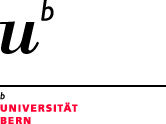Exams are a nerve-wracking and important affair for students – not least for those in the 5th study year of human medicine, who (in addition to a practical exam) have to take a 4.5-hour written exam on the whole year. If, on the 1st April this year, a student from another subject had accidentally entered the largest lecture theatre of the university centre vonRoll, she would definitely have noticed something different: Although almost 200 students were busy taking their exam, the typical shuffling of papers was nowhere to be heard, for lying on the tables were not exam booklets but tablets.
To support the transition to the new exam medium, students were able to try out the exam software in advance with example questions. In addition, they could watch a video guide. Examic Measured was developed by the Institute for Medical Education (IML) and was optimised with regard to user-friendliness from the very beginning. This paid off, as this comment from the anonymous and voluntary online survey showed: «I had never tried the tablet before the exam, have never owned a tablet myself, and hadn’t even consulted the video on the Internet. But I still didn’t have any problems, the programme is highly intuitive.» Moreover, with the help of the standardized questions of the evaluation, it was possible to calculate the SUS score (Software Usability Scale), which, with 92 out of 100 possible points, turned out to be very high.

Back to paper?
Despite the positively evaluated software and the problem-free implementation, do students wish to return to their tried and tested method of working on paper? This, however, also involves transferring the multiple-choice answers onto special sheets of paper, which are then read by an optical scanner for the further processing of the results. The feedback from the survey, in which three quarters of the examinees participated, reveals that this error-prone and painstaking task brought with it a great deal of stress. Thus, nobody is mourning this work step. Particularly praised was also the simple overview of the solution progress and the better navigation possibilities in the electronic exam. On the other hand, students felt disturbed by reflections of the light on the tablet screen and wished for technical improvements such as zoomable images.
Despite the positively evaluated software and the problem-free implementation, do students wish to return to their tried and tested method of working on paper? This, however, also involves transferring the multiple-choice answers onto special sheets of paper, which are then read by an optical scanner for the further processing of the results. The feedback from the survey, in which three quarters of the examinees participated, reveals that this error-prone and painstaking task brought with it a great deal of stress. Thus, nobody is mourning this work step. Particularly praised was also the simple overview of the solution progress and the better navigation possibilities in the electronic exam. On the other hand, students felt disturbed by reflections of the light on the tablet screen and wished for technical improvements such as zoomable images.
Nevertheless, the results are clear: 67% clearly or rather prefer the tablet, and only 12% clearly or rather prefer paper. 21% have no preference. In the words of one student: «Anyone who has mastered the material should be able to pass an exam on any medium. If I fail, then it is definitely not down to the tablet!!» Very true – the content of the exam is still, of course, what matters. Through new types of question and dynamic media, electronic exams also enable content-related innovations. This development at the University of Bern at least does not appear to be failing due to the acceptance of the human medicine students.
